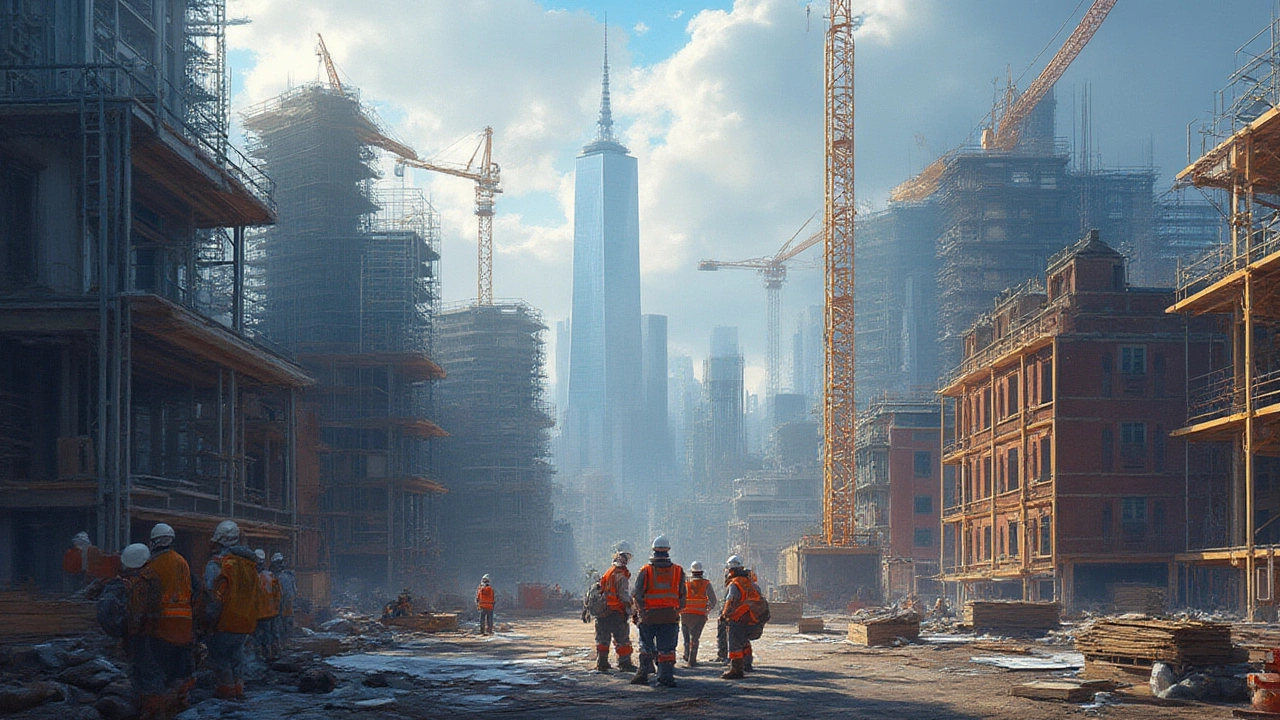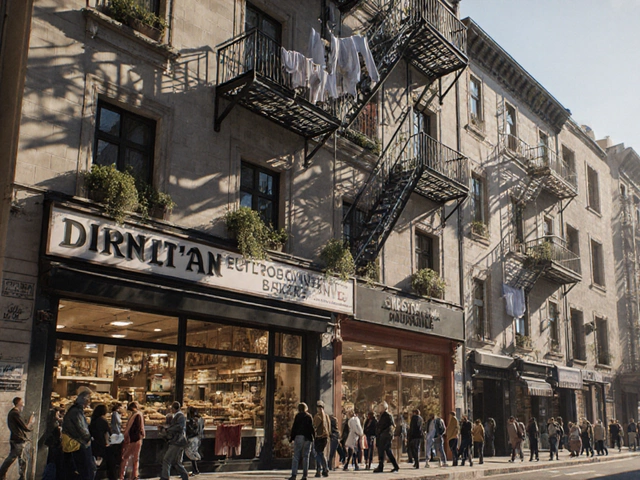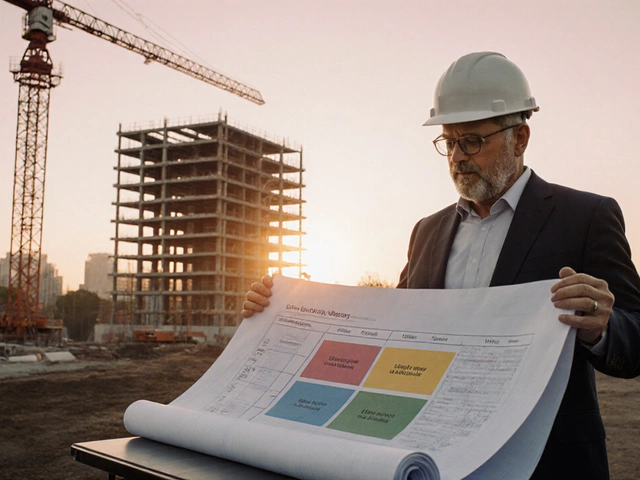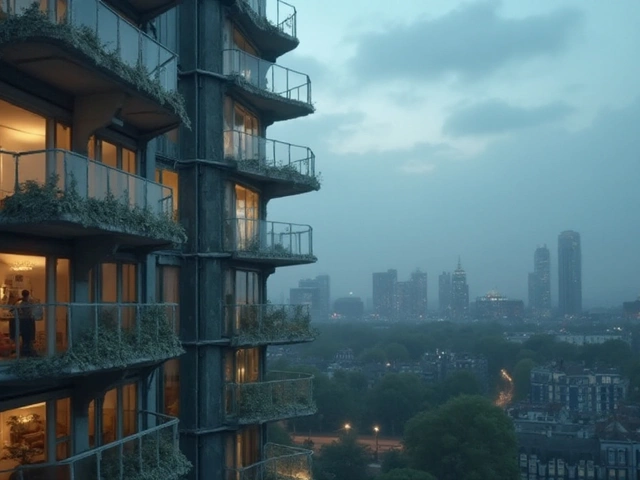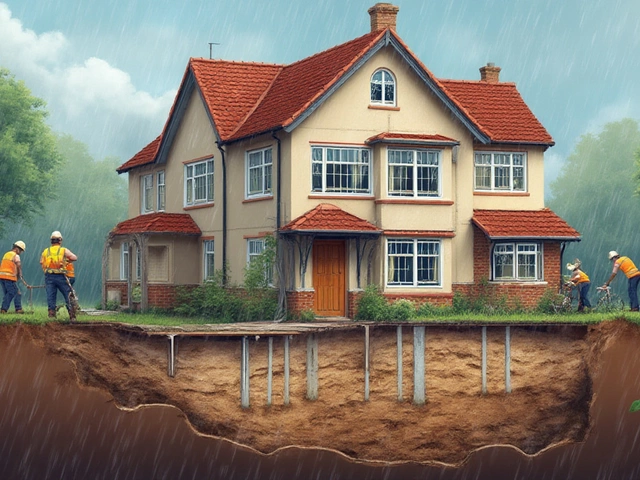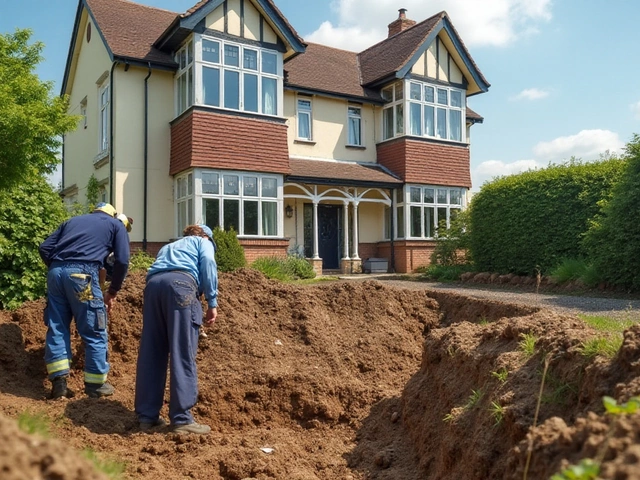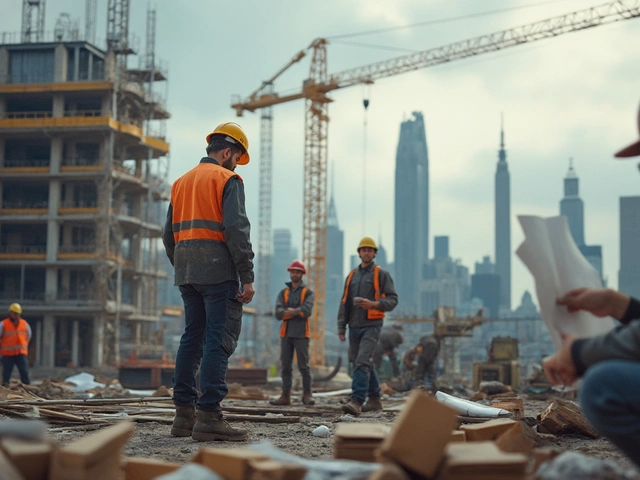If you’ve ever walked into a soaring office tower or a cozy corner café, you probably didn’t think twice about what type of construction holds it all together. Yet, the backbone of every commercial structure doesn’t just matter for architects or engineers—it affects everything from insurance rates to renovations, safety codes to heating bills. Each time a new business opens in Halifax or Toronto, someone had to pick the right method for building it. That choice shapes the entire lifespan of the property. Surprisingly, Canada has its own approach that nudges how things get built compared to projects just across the border in the States. Knowing the basics isn’t just trivia—it’s essential.
Breaking Down Commercial Construction Types
When someone says “commercial construction,” most folks picture a large warehouse, sleek corporate HQ, or maybe a strip mall. But there’s more to it than just the outside look. At the heart of it all, commercial building codes split structures into “types” based on how well they handle fire, what they’re made of, and how quickly emergency services can access them. Here in Canada, these construction types are part of the National Building Code (NBC), while the International Building Code (IBC) rules south of the border. In both cases, the main goal is to keep people safe, protect investments, and slow down disasters before they get out of hand.
There are five recognized building construction types in North America—typical labels are Type I through Type V. Let’s break them down simply:
- Type I: Fire-Resistive – Think high-rise towers. Everything is non-combustible, including walls, floors, and roofs, often using concrete or protected steel designed to handle fires for at least two hours. Firefighters see these as the safest in a blaze.
- Type II: Non-Combustible – These use concrete, steel or masonry walls, but sometimes with less protection than Type I. You’ll see them in schools, warehouses, hospitals, or big box stores. They’re fire-resistant but not invincible.
- Type III: Ordinary Construction – Brick and block on the outside, wood on the inside. These might look solid, but older main-street buildings can hide old wooden floors or roofs that burn quickly.
- Type IV: Heavy Timber – Think old mills or stunning lofts: big wooden beams, minimum sizes thick enough to resist fire longer than basic framing, but still flammable eventually.
- Type V: Wood Frame – These are your typical low-rise buildings, small shops or motels, and restaurants. Cost-efficient, easy to build, and common—but most likely to burn if not carefully fire-protected.
What you see outside doesn’t tell the whole story. That sleek glass exterior might be wrapped around a concrete fortress (Type I) or something simpler (Type II). These definitions affect how much insurance you’ll pay and what legal hoops you’ll jump through for renovations. Plus, Halifax’s unpredictable spring weather, or Toronto’s July heat waves, ask for materials that can handle big temperature swings without cracking or leaking—a real worry here along the East Coast with our salty air and cold snaps.
The Main Building Materials Used in Commercial Construction
Building something that’ll last generations—or at least hold up to day-to-day abuse—isn’t about picking the prettiest brick. Commercial builders have four main material choices: concrete, steel, masonry, and wood. Each comes with its own quirks, strengths, and costs. Walk down Barrington Street in Halifax and you’ll spot all four on one block.
Let’s start with concrete. Concrete’s everywhere in commercial construction because it’s strong and handles fire well. Reinforced concrete frames are tough enough to support multi-storey towers. The catch? Pouring concrete takes skill, warmth, and time—it won’t cure right if poured over ice, so winter builds in Nova Scotia need tenting and heaters, adding to the budget.
Steel’s the go-to for massive spans, like sports arenas or cavernous warehouses, thanks to its strength-to-weight ratio. These buildings go up fast if the ground’s prepped right. But steel can lose strength fast in a fire unless it’s coated or protected, which means extra steps to stay safe and meet regulations. Rust is another worry, especially where moist Atlantic air sneaks in.
Masonry—a fancy term for bricks or stone—has deep roots in Canadian construction. It’s sturdy against weather and insects, making it perfect for long-term value. You’ll see beautiful old bank buildings or historic storefronts made this way, but it’s slow to build and needs serious expertise. Without lots of insulation, though, they can leak heat, making energy bills brutal in winter.
Wood is cheap, easy to work with, and flexible. It’s popular for quick builds—especially new restaurants, coffee shops, and smaller retail stores. Wood-framed construction now includes innovations like cross-laminated timber (CLT) panels, which are bigger, stronger, and safer than old 2x4s. But code restrictions limit how high you can build with wood, and Halifax’s humidity means long-term rot is a risk without regular upkeep.
Materials aren’t just a matter of taste. Local rules, fire ratings, and future plans decide what fits. Renovating inside an old warehouse? You better know what’s behind the plaster, or risk violating fire codes the second you hang a new sign. If you ever get the chance, peek behind a demolition barrier—odds are you’ll see more than one material tangled together, as each renovation layer tells a different story.
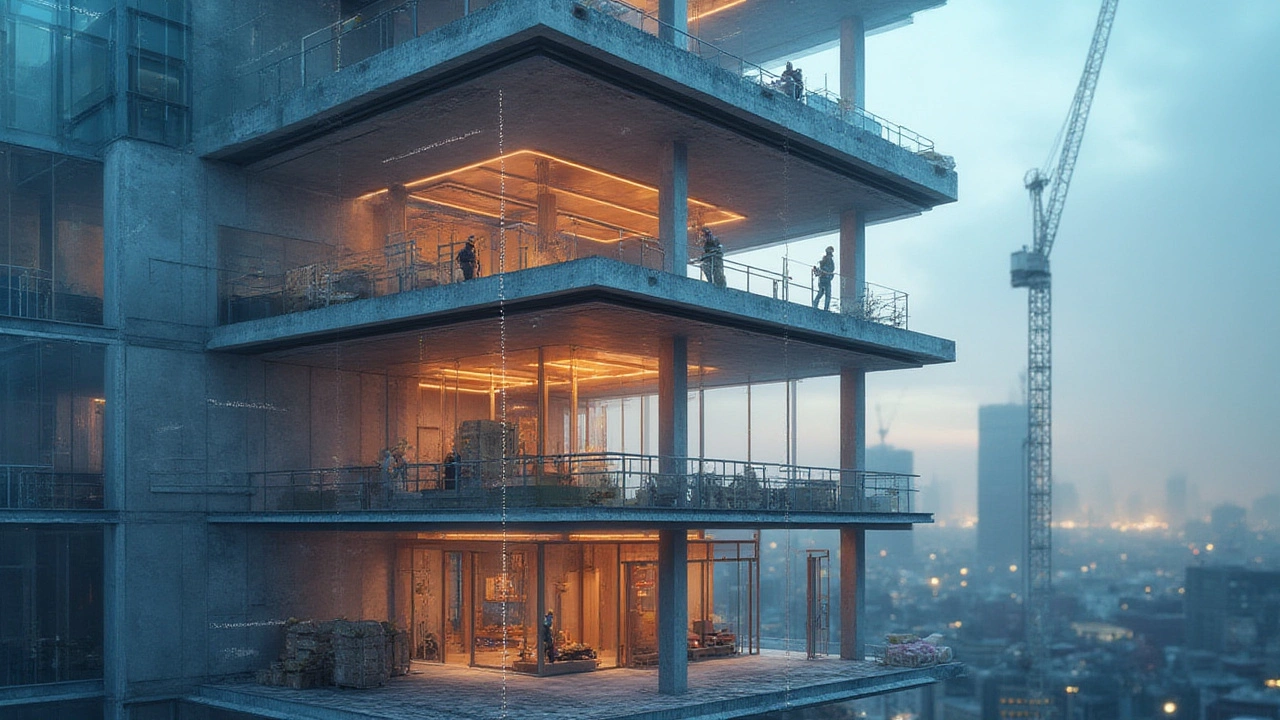
Why Construction Type Matters for Owners and Tenants
Lots of business owners gloss over construction details, focusing instead on square footage, parking spots, or convenience. But here’s the trick: the commercial construction type shapes everything from your operating costs to the survival odds of your coffee shop in an electrical fire. Insurance companies lean straight into these classifications when setting rates. Run a craft brewery in a heavy timber (Type IV) loft? Your policy will look way different than a neighbor in a concrete shell (Type I).
Lease terms often sneak in rules tied to construction types. You might be responsible for extra upgrades—or limited in what kind of renovations you can tackle inside a wood-framed building. Even the fire department will react based on what they know about the building’s skeleton; some cities keep detailed records linking every parcel to its type, so first responders know what to expect.
Your utilities can also swing wildly. Modern concrete and steel towers, with airtight windows and thick insulation, keep heating and cooling costs in check—vital with Nova Scotia Power rates climbing steadily. But those charming brick shops, while appealing, may guzzle energy unless retrofitted.
Let’s not forget each type’s lifespan. Type I buildings are built to be around for generations, perfect for long-term investors. Type V wood structures? They may need major upkeep, from pest treatment to roof repairs, just to stay open. Knowing the structure’s background helps you budget for the next thirty winters—and lets you ask smarter questions if you’re thinking about buying or leasing.
Even little details tie back to code. Need to fit a commercial kitchen? Certain construction types make installing big exhaust hoods or extra insulation way easier—or prohibitively costly. Want to sublet space? Some tenants (like restaurants) face extra fire suppression requirements depending on which type the building falls under. Missing these details can wreck a promising investment before the first customer walks in the door.
Building Codes, Fire Ratings, and Safety Considerations
Everyone hears about building codes, but not many bother to understand why they’re so relentless—and that’s risky. Canadian codes keep evolving. Each time there’s a news story about a fire in an apartment or warehouse, it usually sparks tweaks to the National Building Code. These codes outline minimum standards for materials, structural design, air quality, accessibility, and especially—fire protection.
The magic number you’ll hear tossed around is “fire-resistance rating.” This means how long a building’s skeleton can keep it together when facing flames, measured in hours. Type I structures are rated for at least two hours—enough to evacuate everyone safely and give Halifax’s fire crews a fighting chance. Lower types, like wood-framed, rarely hit an hour without lots of extra protection.
Sprinkler systems, smoke alarms, and fire-rated doors all tie directly into the building’s type. These features can become mandatory before you even install new drywall or open up shop. Skip them, or cut corners, and you’re gambling with people’s lives and your insurance payout.
Accessibility codes, seismic upgrades (hello, minor Halifax tremors!), and energy efficiency demands have layered more complexity onto every project. Want solar panels or a green roof? The underlying structure needs to hold that weight and allow modifications without voiding warranties or breaking fire code. Even something as simple as running new IT cabling through old brick and timber structures risks chipping away essential fire protections—so code inspectors keep a close eye.
Halifax in recent years has seen some striking projects balancing new and old codes. The Queen’s Marque development on the waterfront, for example, uses a mix of concrete, steel, and salvaged timber—showing modern hybrid construction where blending materials creates unique spaces but multiplies the number of codes you have to satisfy.
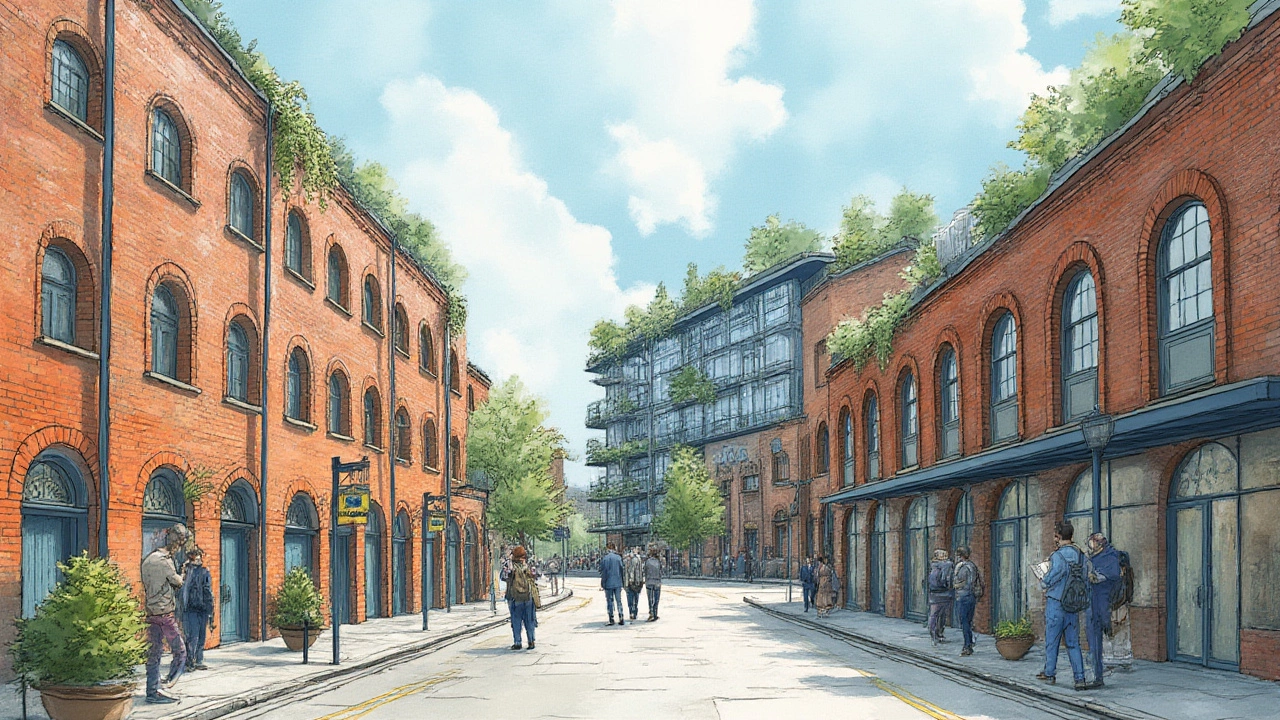
How to Identify Your Building’s Construction Type and What to Watch For
If you own, lease, or even just manage a commercial property, you’ll need to pin down its construction type. This isn’t always obvious from the outside. Here’s a checklist to get started:
- Check property records and inspection documents. Halifax and most municipalities keep archives you can search online using the civic address.
- Ask your insurance broker—they often have construction details on file, since it determines premiums and coverage limits.
- Walk through the building during renovations or maintenance. Exposed beams, hidden vaults, metal joists behind old drywall—these clues reveal how the place was put together.
- If you’re stuck, hire a building inspector or structural engineer familiar with commercial work, not just houses—commercial is a whole different game.
Once you know the type, double-check:
- How well is it maintained? Improper repairs (like patching a masonry wall with standard mortar—bad plan in our climate!) weaken fire protections.
- Are legacy codes being followed, or do past renovations break the rules? Building inspectors can flag old modifications that don’t meet today’s safety standards.
- Is documentation available? For older brick buildings or timber structures, original blueprints can solve headaches—or highlight hidden risks.
And if you’re taking on a new commercial space: get everything in writing. That includes the current building type, material specs, and any previous code violations or insurance claims tied to fire, rot, or unsafe alterations. A savvy landlord will have these ready. If not, that’s a red flag. Remember, success for your coffee shop, gym, or clinic can hinge on what’s behind the walls—sometimes, it’s the factor that decides whether you’re open next year or sorting out insurance paperwork after a disaster.
Halifax’s construction mix is evolving, old meets new every time a business opens its doors. Whether you’re planning a sleek, modern high-rise or making a home for your passion project inside a cozy, century-old storefront, the right construction type brings peace of mind—not just code compliance. Forgetting about it can cost you way more than a leaky roof ever would.
